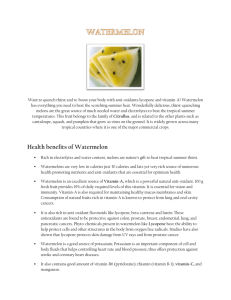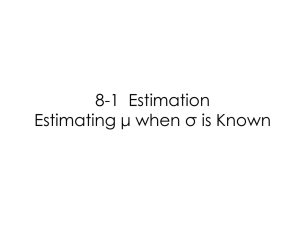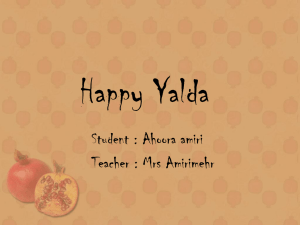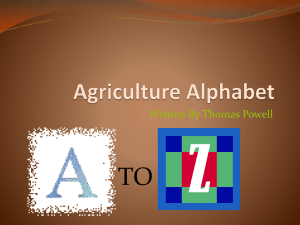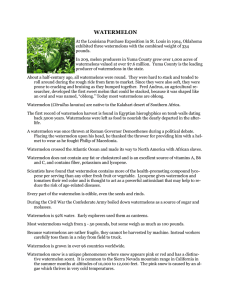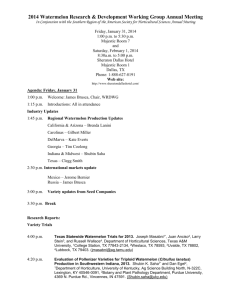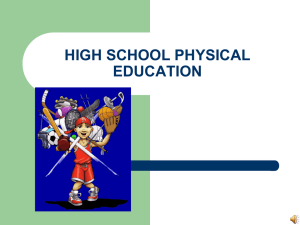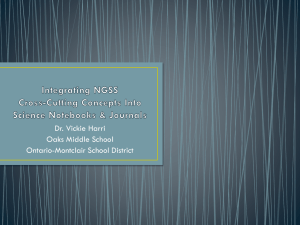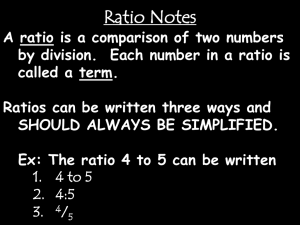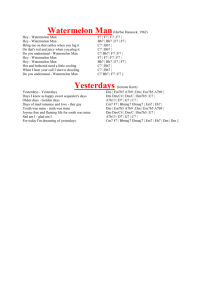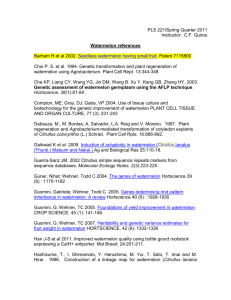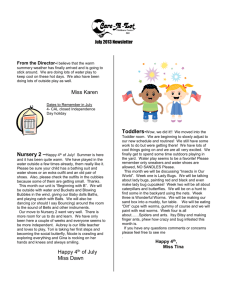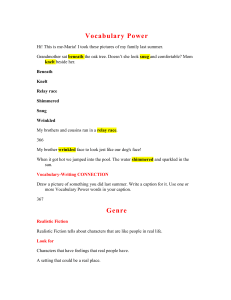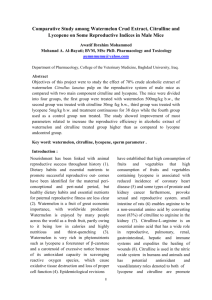tasty collage
advertisement
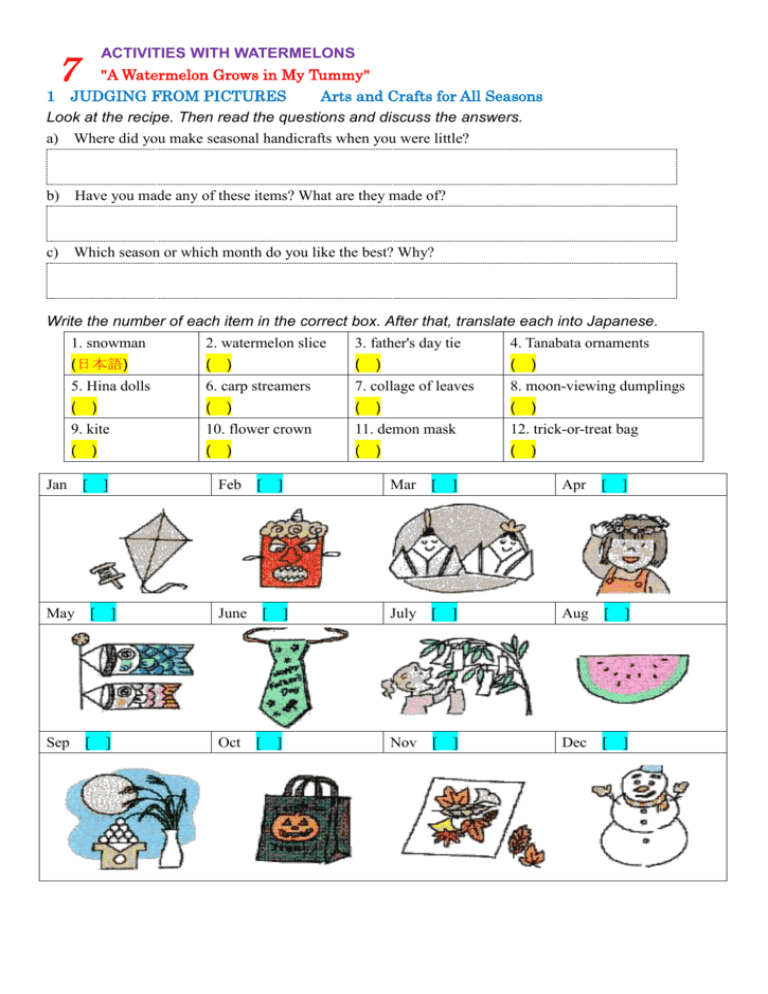
7 ACTIVITIES WITH WATERMELONS "A Watermelon Grows in My Tummy" 1 JUDGING FROM PICTURES Arts and Crafts for All Seasons Look at the recipe. Then read the questions and discuss the answers. a) Where did you make seasonal handicrafts when you were little? b) Have you made any of these items? What are they made of? c) Which season or which month do you like the best? Why? Write the number of each item in the correct box. After that, translate each into Japanese. Jan 1. snowman 2. watermelon slice 3. father's day tie 4. Tanabata ornaments (日本語) ( ) ( ) ( ) 5. Hina dolls 6. carp streamers 7. collage of leaves 8. moon-viewing dumplings ( ) ( ) ( ) ( ) 9. kite 10. flower crown 11. demon mask 12. trick-or-treat bag ( ) ( ) ( ) ( ) [ ] May [ Sep [ Feb ] ] [ Mar [ ] Apr [ ] June [ ] July [ ] Aug [ ] Oct Nov [ ] Dec [ ] [ ] ] 2 LISTENING COMPREHENSION Emi's Self-introduction Match the English and Japanese expressions. 1. shape 2. oval 3. flesh 4. stripe 5. seed Listen to the audio and check true (T) or false (F). 1. [ T / F ] Ms. Tano covers a watermelon with a handkerchief. 2. [ T / F ] She talks about the size and shape of the watermelon. 3. [ T / F ] Hal's father plants watermelons every year. 4. [ T / F ] The children cut the watermelon into slices. 5. [ T / F ] The outside of the watermelon has dark gray stripes. 3 ADVICE FOR THE INTERNSHIP Emi's Lecture Notes ― Going for a Walk Translate the sentences into Japanese. ① Children can express their ideas and feelings through works of art. There is no right or wrong in making art. ② Making art expands their imagination and stimulates creativity. It also develops eye-hand coordination. ③ Art activities are open-ended activities. Children are more interested in the process than in the product they create. TALKING TO CHILDREN Useful Expressions for a First Interaction with Babies Translate Japanese sentences into English, arranging the given words. 1. 今度は何を作っているの? (time, you, this, are, making, what) 2. どんな味のアイスクリームかなあ? お味見させてね。 (is, taste, this, let, what, it, one, flavor, me) 3. 2 つの味を作ったのね:バニラとチョコ。 (two, vanilla, you've, and, prepared, flavors, chocolate) 4. わあ,それは冷たくておいしそう。 (tasty, look, does, cold, and, wow, that) 4 CONVERSATION On the Way to the Park Choose the correct words. Then listen to the CD and practice with your partner. Tano: Why don't we eat watermelon seeds? Akane: Watermelon seeds 1 taste bad 1) and / but I don't like them. Tano: I see. What happens if you eat the watermelon seeds? A watermelon grows in my tummy and comes out through my belly Hal: button. Tano: Hmm. Actually, if you eat the seeds, they'll come out when you go to the bathroom. So don't worry, 2) and / but it's better not to eat the seeds. Do you understand? Children: Yes, Ms. Tano. Tano: OK, children, now you can come 3) and / but look at the watermelon slices. Can we eat them? Hal: Tano: Good question .You can, 4) and/ but not now; we have to wait till snack time. Take a good look at the slices, then go back to your seats 5) and/ but start drawing. Use the crayons on your tables. SUBSTITUTION DRILL Use the expressions below to make three more conversations like the one above. a) Watermelon seeds .[ b) Actually, if you eat the seeds, they'll come out ]. when you [ ]. c) Use the [ ] on your tables. Ex. taste bad go to the bathroom crayons 1 look ugly go to the restroom drawing paper 2 are hard go to the toilet colored pencils 3 smell bad go potty paints 5 READING AND LISTENING Emi's Journal --Into the World of Children Read the journal entry and choose the correct words. Wednesday, June 14. Today I observed Ladybug Fours Class. In the morning, the children were making mud cupcakes with their little 1) fingers / toes in the sandbox. They used leaves, pebbles and twigs as decorations. Afterwards, they pretended to sell the mud pies to each other. The treats sold out in no time and the children happily clapped their 2) heads / hands. At nap time, Akane asked me to stay beside her. She closed her 3) mouth / eyes and I gently patted her 4) chin / back to put her to sleep. After their nap, the children drew watermelons. One girl couldn't draw at all and was crying. She covered her 5) face / feet with her little 6) hands / teeth. I felt sorry for her. I wondered if I should help her, but Ms. Tano said I should not. When Hal finished drawing, he lowered his 7) nose / cheek to the top of the picture to smell it and stuck out his 8) lips / tongue to lick it. He said, "This watermelon is yummy." I could hardly believe my 9) ears / eyeballs. Later, Ms. Tano told me that Hal didn't actually lick it, but only pretended to. I understood that he had tasted his 'pretend' watermelon in his imagination. 1. What did the children in the sandbox do? a) They took turns throwing mud cupcakes at each other. b) They decorated themselves with leaves, pebbles and twigs. c) They enjoyed playing with mud and creating make-believe plays. 2. How did Emi feel when she saw a girl crying? a) Emi felt proud of her and wanted to praise her. b) Emi felt angry at her and wanted to scold her. c) Emi felt sad and wanted to do something for her.
